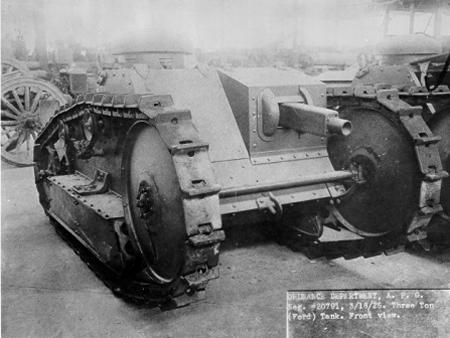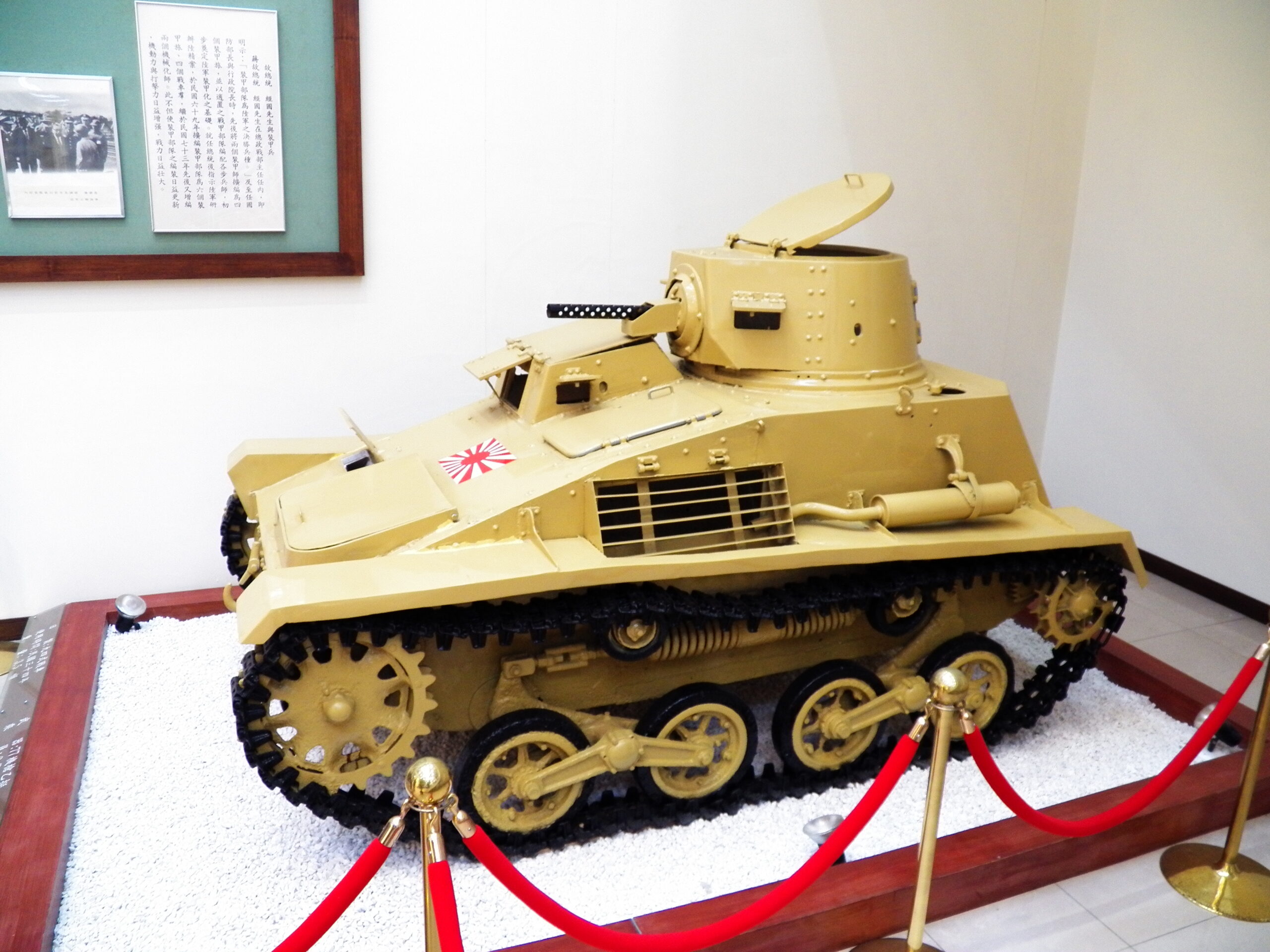The Tankette – The most adorable tank ever created
- By Travis Pike
Share This Article

Have you ever looked at an armored vehicle and thought, well, that’s cute? That’s what I thought when I saw my first tankette. Tankettes were tiny tanks, some nearly comical in appearance. Today we’ll explore their history and purpose and see what led to their downfall.
The Tankette – A product of its time
During World War I, the Allies employed tanks in a fairly simple way: Tanks would race forward, guns blazing, and break through enemy trench lines and lay on the fire. Following the tanks would be the infantry, who would take and hold ground. At least, that’s how it was supposed to work.
While that tactic was initially successful, it wasn’t long before Germany wisened up and began destroying or immobilizing tanks quickly with artillery and even anti-tank rifles. This would halt the attack and often send the attacking infantry back to their trenches. The remaining tanks would be isolated and easily destroyed. So, a need for a more mobile tank arose.

The tankette was created after WWI. It was designed to be a smaller, faster, and more maneuverable armored vehicle. These mini tanks rarely had large main guns. Instead, they would often carry a machine gun or two, so it’s better to think of them as wheeled bunkers. They could resist small-arms fire while laying down machine gun fire and allowing the infantry to advance. They were smaller and harder to hit than the era’s tanks and were often designed to be easy to retreat with when necessary.
These vehicles wouldn’t just be used on the attack but for reconnaissance purposes as well.
While most tankettes used machine guns, some also had 20mm light cannons and grenade launchers, and one German design even acted as a tank destroyer.
Related: The German sniper mask – A visage of terror
Notable tankettes

In 1918, as WWI was still being fought, Ford created the M1918. This three-ton tankette used two Ford Model T engines and went a blistering eight miles per hour. It’s arguable this was more of a tank than a tankette, but it really rides the line. One thousand were ordered, but Armistice was signed shortly after, and the order was canceled.
The British designed one of the first true tankettes. The Morris-Martel design was built in the garage of Giffard Le Quesne Martel. The British War Office was interested and approved the design for testing. Alongside the Morris-Martel was the Carden Loyd Tankette, which was the more successful of the two. The Carden Loyd model came in both one- and two-man variants and was a mobile machine gun position. It featured light armor and tracks.
The Carden Loyd Tankette was successful in its homeland and was licensed or purchased by numerous countries including Poland, the Soviet Union, Japan, Bolivia, Italy, and Czechoslovakia. Most of these countries would later use the Carden Loyd as the basis for their domestically produced tankettes. Changes would often be made to better adapt the tankette to the country it operated in.
Poland designed the TKS, the Soviet Union built the beefy T-27, and Japan designed a number of tankettes, including the Type 94, using the Carden Loyd as the basis. The Carden Loyd would later be used to influence the Universal Carrier, also known as the Bren Gun carrier.
Related: Nazi drone technology and the Goliath tank killer
What happened to tankettes

In the interwar period, tankettes saw some scuffles in small conflicts around the globe. Italy used them in Ethiopia and Bolivia in the Chaco War; tankettes were also used in the Spanish Civil War.
By World War II, they were outgunned and outdated as anti-tank weaponry had become quite powerful. Armored cars and early APCs were more effective and useful overall. However, Italy and Japan used them extensively during the war.
Germany also created the Marder 1, an anti-tank tankette equipped with a 7.5 CM PaK 40 cannon. While most tankettes were moving machine-gun bunkers, the Marder 1 was a moving field gun. Germany produced 60 of them, but it seems like they never reached the front.
Tankettes would occasionally spring up after WWII. The U.S. Marines used the M50 Ontos in Vietnam and the Germans built the Wiesel AWC for airborne troops and armored reconnaissance. However, their use is fairly rare in modern warfare.
Tankettes were never employed massively, but were influential and led to the success of the armored car and modern troop carriers like the M2 Bradley. They are also the only armored murder machine I’d call cute.
Feature Image: A Carden-Loyd two-Man tankette, 1926. (Wikimedia Commons)
Read more from Sandboxx News
- Ukraine’s counteroffensive hits strong Russian resistance
- These are the 3 different aircraft we call the F-35
- Energy drinks – The unsung hero of the Global War on Terror
- This is what made the MP7 SEAL Team 6’s favorite PDW
- Everything you need to know about the UAP whistleblower who says the US has recovered alien spacecraft
Related Posts
Sandboxx News Merch
-

‘Sandboxx News’ Dad Hat
$27.00 Select options This product has multiple variants. The options may be chosen on the product page -

‘AirPower’ Golf Rope Hat
$31.00 Select options This product has multiple variants. The options may be chosen on the product page -

‘Kinetic Diplomacy’ Bumper Sticker (White)
$8.00 Add to cart

Travis Pike
Travis Pike is a former Marine Machine gunner who served with 2nd Bn 2nd Marines for 5 years. He deployed in 2009 to Afghanistan and again in 2011 with the 22nd MEU(SOC) during a record-setting 11 months at sea. He’s trained with the Romanian Army, the Spanish Marines, the Emirate Marines, and the Afghan National Army. He serves as an NRA certified pistol instructor and teaches concealed carry classes.
Related to: Gear & Tech, Military History

Unit 684 – The South Korean suicide squad with the tragic history

How troops survive long deployments at sea

These were 5 outrageous uses of nuclear power during the Cold War

The French once put a cannon on a Vespa and sent it to war
Sandboxx News
-

‘Sandboxx News’ Trucker Cap
$27.00 Select options This product has multiple variants. The options may be chosen on the product page -

‘AirPower’ Classic Hoodie
$46.00 – $48.00 Select options This product has multiple variants. The options may be chosen on the product page -

‘AirPower’ Golf Rope Hat
$31.00 Select options This product has multiple variants. The options may be chosen on the product page -

‘Sandboxx News’ Dad Hat
$27.00 Select options This product has multiple variants. The options may be chosen on the product page
